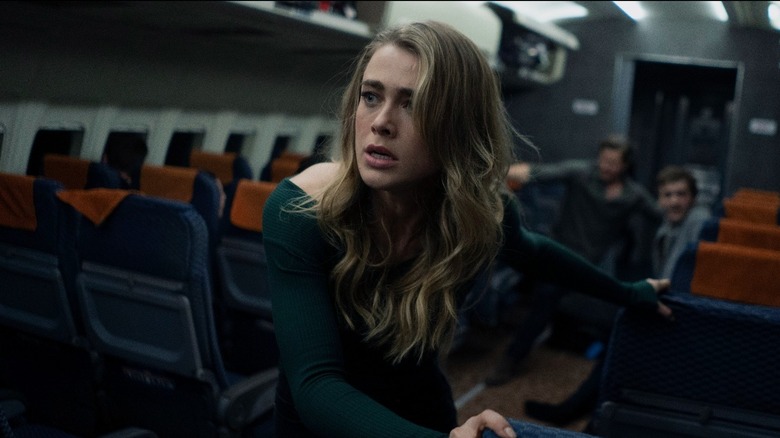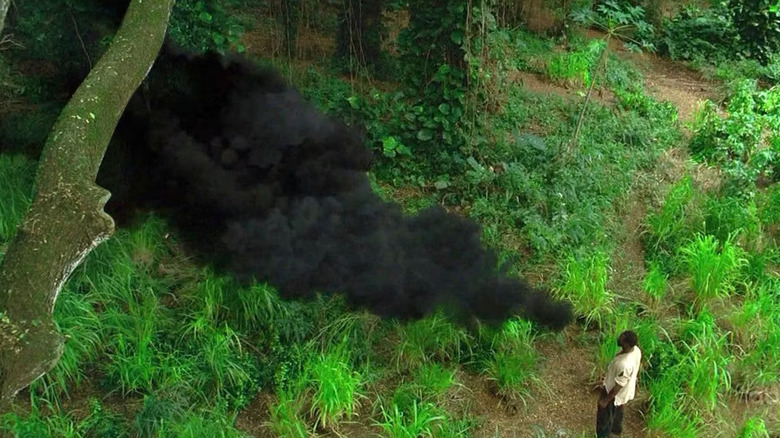Manifest's Dark Angel Did What Lost's Smoke Monster Failed To Do
Contains spoilers for "Manifest" Season 4 finale, "Final Boarding"
"Manifest" Season 4 ends after a ride that has been as bumpy for the characters as it has for the show itself. Netflix picking up the series for its fourth and final season allowed fans to see the story's conclusion — and what a conclusion it is. "Final Boarding" deals with the Death Day, a volcano, the return of the Flight 828 plane, a generous helping of forgiveness, close calls with turning into ash ... and, of course, a final encounter with an ominous Dark Angel who's out to weigh their worth.
The Dark Angel concept serves "Manifest" well. The ominous, shadowy figure acts as a judge of sorts and, as Netflix's TUDUM confirmed, can be considered the series' true Big Bad antagonist. The entity serves a clear purpose and is dispelled when the remaining Flight 828 survivors manage to convince it of their worth. Incidentally, this makes "Manifest" the rare supernatural drama that actually sticks the landing on a smoke-themed villainous creature. Consider "Lost," a fellow representative of the genre that famously features a mysterious smoke monster that made fairly little sense in the end. Here's how "Manifest" succeeded with its Dark Angel while "Lost" failed to deliver with its version of the smoke monster.
Manifest's Dark Angel has clear parameters, while Lost struggled to make sense of the smoke monster
The smoke monster in "Lost" makes its presence heard in the very first episode, and later, it gets a massive moment when it faces off with Mr. Eko (Adewale Akinnuoye-Agbaje) and kills him. However, as the show brings more and more elements into the mix, things lost cohesiveness ... and the smoke monster is definitely among the show's more confusing elements. In Season 6, it turns out that the creature was actually an alternate form of the Man in Black (Titus Welliver), but other aspects of the monster — like its tendency to shapeshift into Locke (Terry O'Quinn) were never properly addressed. In other words, the smoke monster was a guy who sometimes looked like another guy ... for reasons.
Co-creator Damon Lindelof himself has been quick to admit that "Lost" lost its way a bit over the course of the years. In an interview with Collider, he attributed much of this to the fact that their original plan to end the show in a timely fashion and answer all the mysteries in an orderly manner didn't fly with ABC, which wanted a longer show. This, Lindelof said, ended up messing with the balance.
"One of the notes that we were getting back from ABC was 'When are you gonna resolve these mysteries? And once you resolve these mysteries, why will people keep watching the show?'" Lindelof said. "And Level One of that was, 'Well we're gonna be introducing new mysteries as we go. So hopefully for every one that we answer, we've set up a new compelling mystery. If we get that balance right, they're not gonna stack up.' I think that we can both agree that we did not get that balance right."
It's clear that this imbalance hurt the smoke monster's story arc, too. Compare it with "Manifest's" Dark Angel and its clear role as the balancer of scales, and it's pretty clear which show handles its smoky antagonist with more skill.

